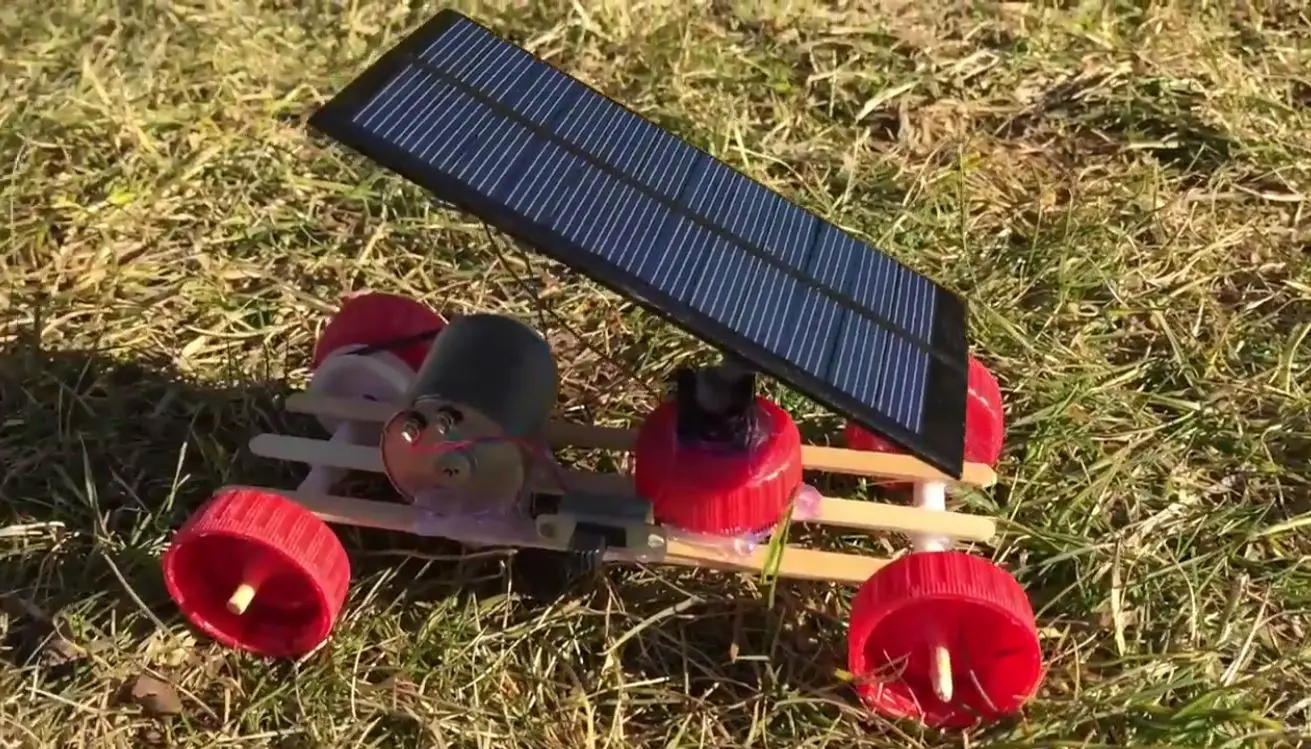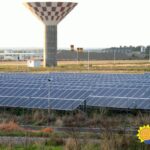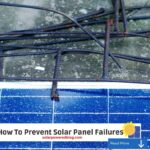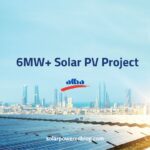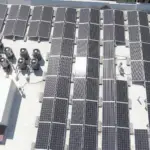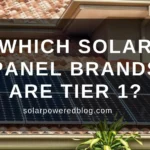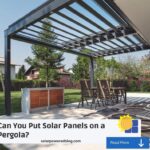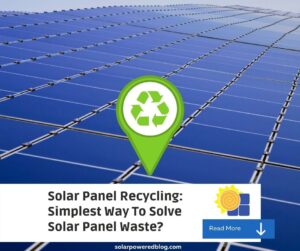We’re going to be talking about the different ways that you can use to know if your solar panel is bad. As a simple rule of thumb, you can easily detect a defective solar module by visual inspection or by exposing it to sunlight and measuring its output voltage using a multimeter.
You don’t want to get stuck paying for something that’s not working so I’m going to show you everything you need to know.

Steps In Determining If A Solar Panel Is Bad
Usually, solar panels can work for years without issue. But most solar panel owners might not be aware of whether the installed solar system is working correctly or not.
So if you don’t know how to tell if a solar panel is bad, follow these simple steps to find out any issue.
Here’s how you can tell if a solar panel is bad:
Step 1: Check If The Inverter Has A Green Or Red Light
This is the easiest way to know if a solar system is bad by checking its status light, i.e., the light shining on the inverter when the system is running.
If the system’s light is green, it’s working fine, and everything’s good. However, an orange light indicates some issues, and red flashing light alerts us that there’s a problem or the system is at fault.
Additionally, the system can also shut down when the voltage is too high or low or an issue with the earthing. That is why, it’s also crucial to know how much voltage drop your PV array experiences.
Step 2: Examine The Solar Meter
The solar meter keeps track of how much electricity is used at home. And a solar panel is supposed to be supplying the most energy, which means you should be consuming less power from the utility.
Hence, the best way to check your solar panel status is to check the meter on a bright day. If the meter displays power consumption from the grid, there can be some fault with your solar installation.
Moreover, the data on the solar meter should always be on the growth trend during the daytime as the solar panel generates energy. However, if the kilowatt-hours of energy remains the same, there is a high chance of an issue with the solar system.
Step 3: Measure the Solar Panel Output
You can easily determine if the solar panel is working or not by measuring its voltage output. You can do this by using a multimeter that has a voltage range that can measure the maximum rated voltage of the module.
However, you must remember to cross-check the voltage limit of the multimeter before measuring the solar panel or array. For example, if you want to check the open-circuit voltage of a solar PV string, make sure that the multimeter is set to DC Voltage and it has a range of at least 1000 Vdc.
And also, make sure that the solar panel is exposed to sunlight before doing the test. This way, you will get the correct output of the module and you will know if it is properly working or not.
If the output voltage does not get at least 80% of the rated solar panel output, you can say that there is something wrong with the PV module. That’s how simple and easy it is.
Step 4: Check for Common Solar Panel Issues
Sometimes, you might notice that the solar system is not producing or generating enough power. In such cases, it can be due to some common defects:
- Loose wiring or connection can cause electrical issues or reduce energy production.
- If the solar panel heats at excessive-high temperatures, it can reduce the solar system’s effectiveness.
- If the solar panel is dirty or damaged, it can prevent the system from generating enough energy.
- Microcracks can result in poor energy production.
- Broken glass is more exposed to weather damage and can weaken the absorption of sunlight.
What Are Solar Panel Hot Spots?
Solar panel hot spots is one of the most common occurrences caused by defective cells such as cracks, mismatches, or loose connection.
Hot spots are areas of overly exposed cells in solar panels resulting in decreased efficiency. This happens when the cells are blocked or shaded from sunlight, and the energy fails to flow around equally.
A panel’s hot spots are those areas causing them to heat up. There are two leading causes of hotspots on solar panels: terrible solder connections and structural defects in the solar panels.
As a result, the current flows only on a few cells, which causes them to overheat or melt. At times, it can also cause a fire.
In such cases, when the solar panels become too hot, their efficiency drops and they lose energy. Which, in return, speeds up the wearing down of the solar system.
A panel’s hot spots are those areas causing them to heat up. There are two leading causes of hotspots on solar panels: terrible solder connections and structural defects in the solar panels.
What Does Snail Trail In A Solar Panel Mean?
Once the panel has been working for a few years, a discoloration known as a snail trail begins to show up on the surface. Faulty front metallization substrate material inside the solar cell production process is one cause of snail trails.
Moisture can build up in a panel due to a defective substrate material. Consequently, oxidation could occur between the silver paste and the EVA encapsulation content (ethylene vinyl acetate).
One reaction involves breaking down the board on the outside by feeding on the back to the front. It appears as “snail trails,” which lowers the panel’s performance. If the board has microscopic cracks, slug trails can form.
What Is A Micro-crack?
‘Micro-cracks’ throughout crystalline PV panels are indeed a common problem we deal with every day. Invisible to the naked eye, these are microscopic rips in solar panels. Micro-cracks could occur during shipping and as a result of sloppy handling practices during installation.
They can also develop over time due to reasons such as thermal tension and seasonal and weather variations. There may not be an immediate impact on production from micro-cracks. The solar cells would be damaged by larger micro-cracks, resulting in decreased production.
What Is Solar Module PID Effect?
“Potential Induced Degradation” is the meaning of the abbreviation PID. Whenever a power loss occurs between both the panel and the earthing, it can cause this issue. A dangerous potential difference between earthing and the panel’s voltage could result when the solar panel is safe.
The PV panel’s performance will continue to decline, and it will accelerate its lifespan due to this effect. Throughout solar plants, we’ve seen a 10% drop in performance due to PID. We’re currently experimenting with a variety of methods to reduce or even reverse the effects of PID.
How Solar Panels Get Damaged
Generally, solar panels can last for a good time of more than 25 years. They’re built to last and can withstand extreme climates but are not resistant to damages.
The solar panel mostly gets damaged or broken due to extreme weather conditions like hail storms, tree branches, and lightning. You may even add the snow or debris from the winds. And the glass of the solar panel is more prone to such damage.
As a result, such scratches on the panel speed up its degradation with less energy absorption. Eventually, it worsens over time.
Typically, solar panels degrade by at least 1% every year, but you can increase their lifespan with maintenance.
Another reason can be during transportation or installation. In such cases, the solar panel’s frame can easily bend and cause damage since the glass of the PV cells is not flexible. Additionally, water damage from old seals is another common cause of damage.
Are Solar Panels Easily Damaged?
As previously mentioned, solar panels are designed to withstand weather conditions and are encased in durable glass. Solar panels are covered with thick tempered glass that keeps them safe, but some materials require special handling beneath the glass. They can survive mild storms, but micro-damage can hamper their efficiency over time.
Micro damages such as hailstorms, a tree branch falling on the glass, or throwing a stone on the panel do not cause visible damage nor visible to the naked eye. But with time, frequent impact, weather, and changing temperatures can decrease the efficiency of solar panels.
Solar panels typically last between 25 and 30 years. The fact that they are still generating power after 25 years does not imply that they have completely stopped; rather, it indicates that energy production must have decreased to the degree that the manufacturers consider significant.
Do Damaged Solar Panels Work?
A solar panel can still produce power even when they’re cracked and is still usable but won’t produce maximum current nor work to its full potential. During their lifespan, solar panels are exposed to various damages, which can be due to installation or other elements that can cause damage at some point.
However, even when damaged, solar panels can generate power though they won’t function or produce full energy. The thing is, as long as the solar cells are not damaged more than 20%, it’s possible to generate energy.
Causes Why Solar Panels Get Damaged
A damaged solar panel will eventually stop working as constant exposure to weather conditions will damage the cells, and there’s no way to fix it or repair the damaged parts. You might also be interested to look into top-tier solar modules to be more confident of your choice of solar PV panels.
The only option to repair the damage is to replace the panel. Hence, if you’re looking for long-lasting solar panels, avoid the ones that are cracked or broken.
So, here are some of the most common causes why solar panels get damaged:
- Improper handling of solar panels
- Stepping on the surface of solar panels
- Stacking too many PV modules
- Improper installation of solar panels
- Hailstorm
- Falling Debris
Final Thoughts: How To Tell If A Solar Panel Is Bad
Now that you’re aware of how solar panels get damaged, some common defects and how to tell when a solar panel is bad, pretty sure you can do your best to prevent any harm.
Solar panels last for a long time, but they can quickly degrade or produce less energy without proper maintenance. Hence, if you own a solar panel, the best way is to keep them in good condition with appropriate care to keep them working to their maximum capacity.
To extend the lifespan of your solar panels, have their installer and the provider inspect your system regularly. They can discover unseen problems like loose racking or exposed wires during routine inspections. Rather than risk damaging your roof’s boards by scratching or otherwise mistreating them, it’s best to hire a professional to conduct a review.
In addition to your solar panels, you should have your solar inverters as well as a roof racking system inspected as part of your overall solar installation checking. It is common for a PV system to last somewhere around 10 and 15 years, so that will have at some point, even during the entire life of their solar energy.
A currently popular option available to central inverters is the microinverter, which has the same expected lifespan of solar panels – 25 years securing your panels to their roof. Hence, those who don’t keep moving around and sometimes fall off are necessary for racking systems.
Sign up for our email list now and be part of the Solar Powered Fam!




